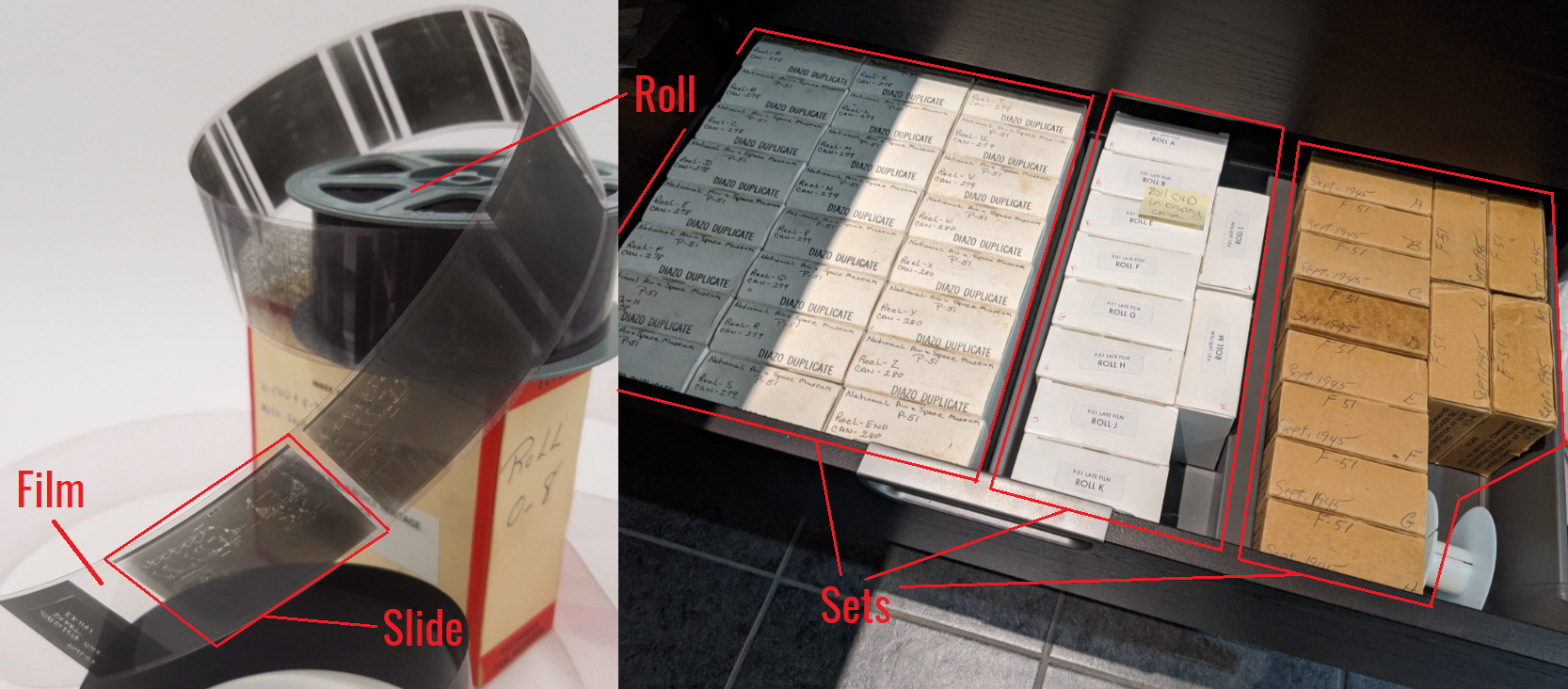At AirCorps Library we talk about microfilm a lot.
Every branch of the military distributed aircraft engineering drawings on microfilm during WWII. Everyone from field offices to factory workers referenced these microfilmed drawings to complete their work and understand how aircraft were put together. Today, this microfilm is still important, and is used in different formats by aircraft restoration shops, museums, and enthusiasts for a variety of purposes. For details on the history of microfilm and its characteristics, check out my blog post called “Understanding WWII Aviation Microfilm”.
In this blog I wanted to talk about where we find microfilm today, and why it is important to be able to recognize it rather than toss it in the trash. AirCorps Library is the only online source that allows users to access digitized engineering drawings for WWII aircraft. The site was launched in 2015 and was a groundbreaking new way for anyone to access digitized microfilm. Currently, we have over half a million WWII era engineering drawings for a wide variety of aircraft, and each drawing is searchable by its part/drawing number!
But before we go any further, let’s talk terminology for WWII microfilm -
Film: A long thin clear ribbon with scaled down images found side by side, sometimes separated by a black bar to differentiate between slides. Film was wound onto a metal or plastic reel (or roll). Film is generally categorized as 35mm or 16mm which is a measurement of how wide the film strip is. 35mm is the most common for aircraft engineering drawings. Film strips vary in length, but average over 85 feet long.
Slide: A single image on a film strip, sometimes separated from the following or preceding image by a black or clear bar. An average roll of 35mm microfilm contains around 650 slides or images.
Roll: A single piece of film strip rolled onto a metal or plastic roll. Microfilm rolls were stored in individual boxes and labeled with a letter.
Set: The number of drawings that it took to build an aircraft was so large that multiple rolls of microfilm were needed to store the images. A set of microfilm indicates that there were more than one roll included for an aircraft or topic. For example, there are 35 rolls of microfilm in the set for the Boeing B-17E/F/G Flying Fortress, 24 rolls for the B-17A/B/C/D, 13 rolls for the Grumman F6F Hellcat, and 32 rolls for early models of the North American P-51 Mustang! Sets of film include drawings, but can also contain documents and additional information that would have helped workers do their jobs more efficiently.

Although the data contained on microfilm would have been classified during WWII, multiple sets of microfilm were distributed for any given aircraft, engine, and sometimes accessories. There were many people who needed access to this information to do their work and assure that it was being done correctly.
Around the world there are large museums that have incredible collections of WWII aircraft microfilm: The archive at the Udvar Hazy Air & Space Museum in Chantilly, Virginia, and the National Archives in College Park, Maryland are the largest in the United States. However, we have found that sets of microfilm have also remained in private collections over the years, and this is the film that we look for to acquire and digitize for AirCorps Library. It is truly amazing to unearth a new set of microfilm that has been unused or lost to obscurity for many years. A great example of this is my blog post titled “New P-51 Drawings on AirCorps Library”, which tells the story of a set of Mustang microfilm that came to us from the basement of Craig Gutchow, a F-105 Thunderchief pilot in Vietnam.
Many people who might stumble onto a set of microfilm would have no idea of what it is, or what to do with it, so I decided to write this blog post as a public service announcement! If you ever come across a bunch of small boxes with old writing on them in your attic, basement, or a trunk owned by a relative, please don’t throw them away! If the rolls contain engineering drawings I guarantee that they will interest some nerd out there, be it myself or someone else. It is incredibly important to preserve this data and get it out to the people who need it most.
Our goal with making the microfilm we locate available to the public is to assure that the historic aircraft they detail will continue to fly safely into the future. Without engineering data on microfilm we’d most certainly be in a difficult position!
Questions about identifying microfilm, or understanding something you found? Feel free to contact me!
Ester Aube
Email: estera@aircorpsaviation.com
Phone: 218-444-4478

